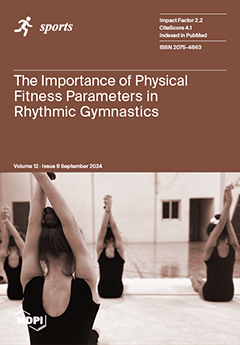This study aims to investigate the correlation between exercise participation motivation and social physique anxiety and their differences across the exercise stages of change in individuals. A convenience sampling technique was used to gather data from 374 sedentary individuals aged 18 and over, using a questionnaire that included the Behavioral Regulations in Exercise Questionnaire-2 (BREQ-2), Social Physique Anxiety (SPA) scale, and Exercise Stages of Change Questionnaire (ESOCQ). Welch’s ANOVA test was utilized to examine if there were significant differences between the average levels of behavioral regulations in exercise and SPA within exercise stages of change, respectively. Based on Welch’s ANOVA results, it has been found that there are significant differences in the total score of SPAS according to exercise stages of change (F = 15.801,
p < 0.001). Furthermore, the sub-factors intrinsic regulation, introjected regulation, and external motivation statistically significantly differ according to exercise stages of change (
,
p < 0.001 for IR;
p < 0.001 for introjected regulation;
,
p < 0.001 for external motivation,
p = 0.750 for AM). Pearson’s r correlation coefficients were also computed to determine the relationship between behavioral regulations in exercise and SPA. A significant negative moderate correlation was found between intrinsic regulation and SPA (r = −0.645,
p < 0.001). Furthermore, a significant medium positive correlation was found between introjected regulation and SPA (r = 0.534,
p < 0.001), external motivation and SPA (r = 0.588,
p < 0.001), and amotivation and SPA (r = 0.564,
p < 0.001). The findings suggest that being self-motivated for exercise might decrease SPA. On the other hand, exercise motivated by external pressures could lead to increased SPA. The findings also suggest that those who started exercising with intrinsic motivation reached more advanced stages of exercise than those who started exercising with extrinsic factors. Finally, extrinsic motives may help in the first stages of the exercise, but intrinsic motives are required to continue the exercise. Consequently, these findings may guide physical activity specialists, trainers, etc., to develop more effective strategies to motivate exercise participation by considering social physique anxiety among individuals.
Full article






